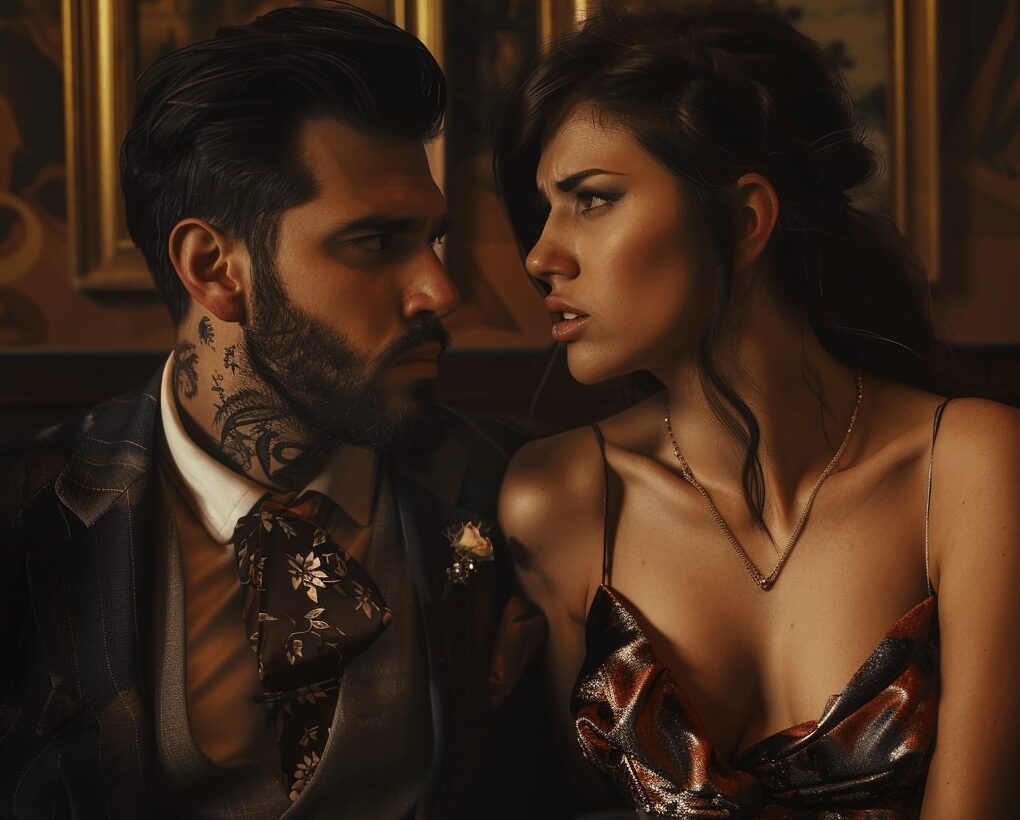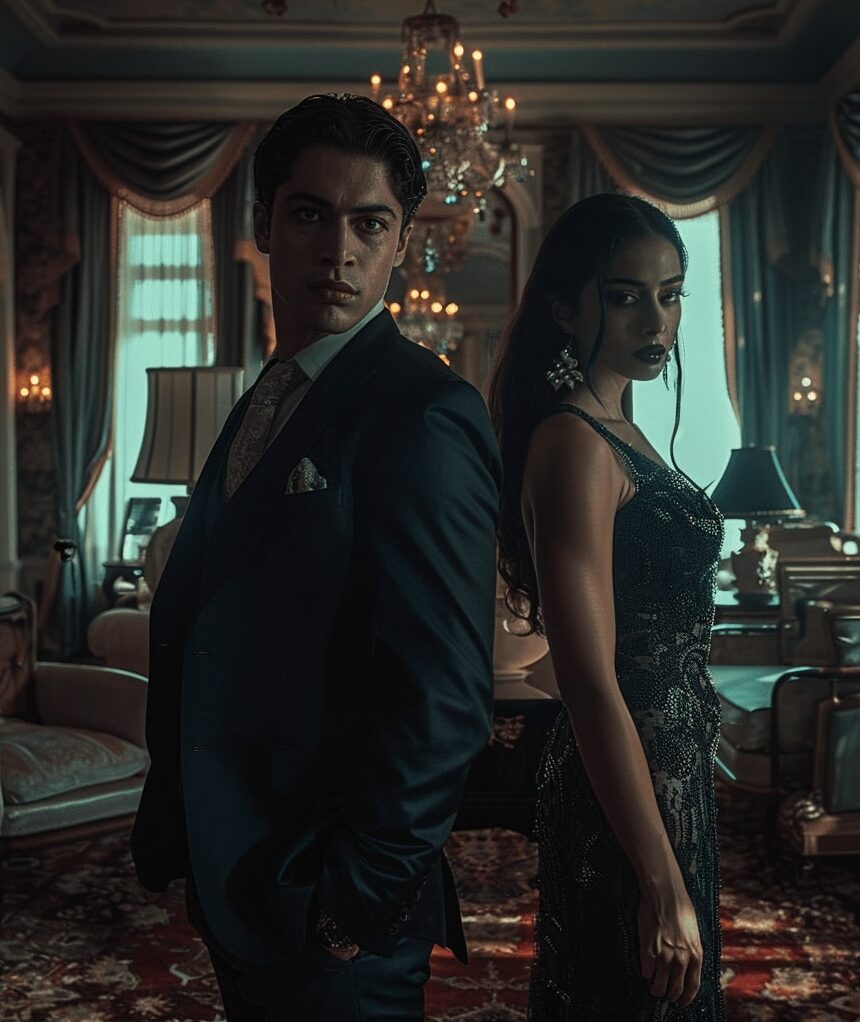Table of Contents
ToggleWhat is This “Enemies to Lovers” Trope?
Let’s be honest – who doesn’t love a good enemies to lovers story? It’s that trope where two characters start off hating each other’s guts but end up falling in love. Sounds dramatic, right? And honestly, that’s what makes it so fun to read.
Usually, these two are on opposite sides of something. Maybe they have totally different goals or just can’t stand each other’s personalities. There’s lots of tension, snarky comments, and fiery arguments.
But as the story goes on, all that anger slowly turns into attraction. They share experiences, open up to each other, and realise there’s more to their enemy than they thought. Before you know it, they’re confessing feelings and having those sweet, vulnerable moments that make your heart melt.
I personally love how this trope shows that love can grow in unexpected places. Let’s break down what makes it so addictive.
5 Main Things You’ll Find in Enemies to Lovers Stories
1. They Start Off Hating Each Other
At first, they’re total rivals. They can’t agree on anything. Maybe they’re fighting for the same promotion, maybe their families hate each other, or maybe they just clash from day one. Honestly, it’s hilarious to watch them argue over everything. But this is what makes their journey to love so satisfying.
2. The Tension is Off the Charts
Even though they “hate” each other, there’s always this undeniable chemistry. You’ll see them argue and suddenly notice how close they’re standing. Or they’ll have a heated fight with so much eye contact it basically screams “just kiss already.” I live for these charged moments.
3. They’re Forced to Spend Time Together
Something always happens that forces them to be near each other. Maybe they have to work on a project together or get stuck somewhere. This forces them to see different sides of each other and starts to break down those walls. Honestly, this part is the most fun because you know love is coming.
4. They Grow Emotionally
As they spend time together, they realise their enemy isn’t that bad after all. They start to understand why the other person acts the way they do. They see their fears, dreams, and secret soft sides. It’s beautiful to see them grow and let go of their judgments.
5. They Heal and Find Love
In the end, these stories are all about healing. They forgive each other, forgive themselves, and realise life’s too short to hold onto hate. Their love feels earned because they worked through so much. And when they finally say “I love you”? Pure magic.
The Arrangement by S.S. Sahoo – a Surprising Enemies to Lovers Story
 A fascinating story about an arrangement between a woman in need and a billionaire follows a couple of stylistic tropes at once: 1) Billionaire Romance; 2) Alpha Male; 3) Enemies to Lovers.
A fascinating story about an arrangement between a woman in need and a billionaire follows a couple of stylistic tropes at once: 1) Billionaire Romance; 2) Alpha Male; 3) Enemies to Lovers.
But we are interested in how it explores the latter – the trope of Enemies to Lovers.
Summary
The story revolves around two characters, Angela and Xavier, who face challenging situations involving family, financial struggles, and unexpected proposals. Angela’s father’s health issues and financial difficulties lead her to consider an insane proposal from Billionaire Entrepreneur Brad Knight – marry his bad boy heartthrob son, Xavier Knight, in exchange for financial support for her father’s medical expenses.
Xavier’s true feelings to Angela, which he opens up about shortly after they meet are complete contempt and hatred.
This is How the Setting Unfolds
| Aspect | Angela | Xavier |
| Situation | Her father is in the hospital after a stroke | He is a wealthy businessman and the son of the CEO of Knight Enterprises |
| Emotions/Thoughts | Worried, desperate, helpless | Annoyed, guilty, wanting to escape New York |
| Interactions | Bumps into a handsome stranger in the park, later meets an older man on a bench | Bumps into Angela in the park, has a confrontation with his father |
| Wishes/Desires | Wants to help her father, wishes she had the money and resources of the celebrities she sees | Wants to avoid his responsibilities and his father |
Most Popular Tropes in Erotic Novels
Here are some of the most popular tropes found in erotic novels:
- Forbidden Love or Taboo Relationships
- Alpha Male
- Enemies to Lovers
- Billionaire Romance
- Friends to Lovers
- Age Gap Romance
- Second Chance Romance.
- Insta-Love or Insta-Lust
- Fated Mates or Soulmates
- Multiple Partners or Polyamory

What’s Really Going On with Their Initial Antagonism?
So, why do these stories always start with two people who just can’t stand each other?
Well, for starters, it makes things way more interesting. When two characters hate each other at first, it creates instant tension. You can feel the sparks fly, and it pulls you right into the story. Honestly, who wants to read about a couple that gets along perfectly from page one? Boring.
It Keeps You Hooked
That friction between them? It fuels the entire plot. Their fights, snappy comebacks, and dramatic arguments keep you glued to the pages. You want to see how long they can keep up the act before their true feelings slip out.
It Helps Them Grow
Another reason it works so well is that it pushes both characters to grow. When they’re forced to deal with each other, they have to face their own flaws and insecurities. Maybe the guy realises he’s been arrogant. Maybe the girl sees she’s been too quick to judge. Watching them change and become better people makes the ending feel even more satisfying.
The Tension is Chef’s Kiss
All that fighting creates so much emotional and sexual tension. You know when two characters are yelling at each other, but deep down, they just want to kiss? That’s what makes enemies to lovers so addictive. It’s like their anger hides the fact that they actually care about each other. I love those scenes where they almost confess their feelings but hold back out of stubbornness.
How Do Male and Female Characters Usually Act?
Male Characters
-
Often confident and assertive
-
Sometimes come off as arrogant or aloof
-
Hide their vulnerable side behind a tough exterior
-
Motivated by success, power, or proving themselves
-
See the female character as a rival at first
-
Clash with her a lot, leading to tension and banter
-
Eventually realise they misjudged her and start to admire her
-
Go through an emotional journey where they soften and open up
Female Characters
-
Strong, smart, and quick-witted
-
Not afraid to call him out on his behaviour
-
Motivated by their values, justice, or doing what’s right
-
Challenge his actions and beliefs without backing down
-
Clash with him often but slowly see his good side
-
Learn to trust him and let their guard down
-
Go through personal growth, becoming more open to love
-
Their romance with him is filled with vulnerability, passion, and sweet moments
Final Thoughts
Enemies to lovers is honestly one of my favourite tropes. It has everything – tension, drama, character growth, and some of the most emotional love stories out there. If you love stories where love grows from hate, filled with fiery banter and powerful confessions, this trope is definitely for you.
What do you think? Do you love enemies to lovers as much as I do? Let me know your favourite book with this trope anytime.





